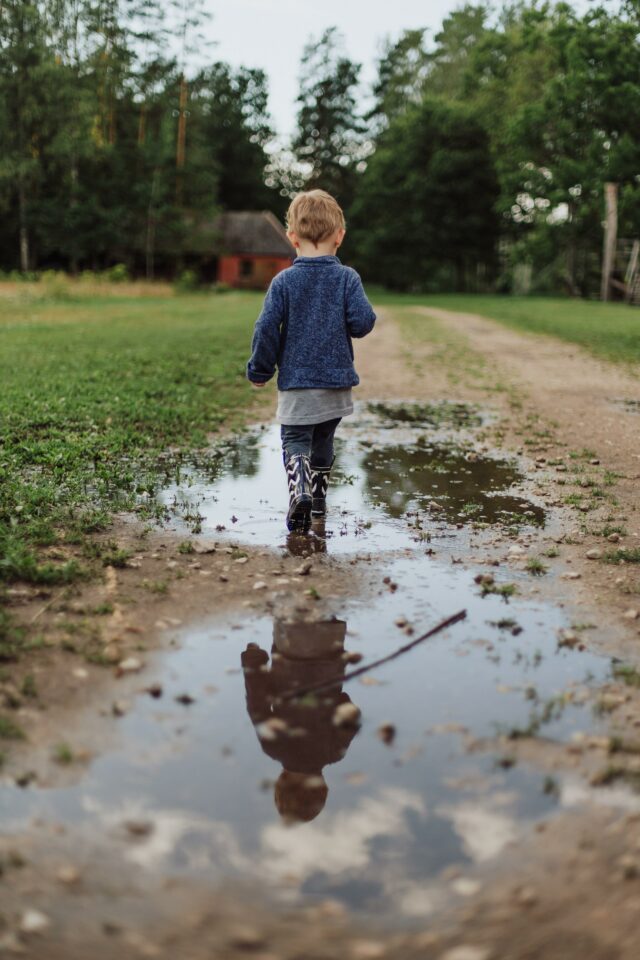Ah, spring! The time of birds singing, wildflowers blooming . . . and mud puddles.
I used to think of mud puddles as the price we pay for warmer weather. Wet shoes and muddy boots seem a small matter, as long as warm sunshine comes along with them. Puddles are fun for kids to splash in, but what else could a mud puddle possibly be good for?

One day I happened to notice a puddle on the edge of a dirt road. The water of the puddle appeared to be moving in some strange way, with rippling wavelets like a miniature ocean. On closer inspection I discovered it was filled with wriggling black tadpoles, each about half-inch long. And hopping around the margins of the puddle were hordes of little toads, so tiny you could fit several of them on a quarter.
Toads lay eggs in shallow pools, and the resulting tadpoles zip through the process of metamorphosis. The journey from egg to adult can take some species of frogs two years, but toads do it all in about 30 days. The toads have no time to waste: they have to get a move on before their puddle dries up and leaves them high and dry.
I started wondering what else puddles were good for. Turns out puddles have all sorts of uses. They’re a swimming pool, bathtub, drinking fountain, and hardware store for dozens of species of animals.
On a hot summer day, birds dive into a puddle like kids playing around in the neighborhood pool. Do wild animals ever just kick back and have a little fun? Surely a robin splishing and splashing in a puddle seems to be enjoying life. But of course all that washing and sluicing of the feathers isn’t just frivolity. Birds need to bathe their feathers often to keep them in peak flying condition.
Puddles are also a crucial source of home building materials for dozens of species. Mud dauber wasps roll the mud into balls, carrying it in their front legs. They then attach it to a rock or wall to craft a shelter for their young. Some types of mud daubers create delicate structures that look like miniature pipe organs; others just form a clump. But no matter what the nest shape, the mud provides a cool, safe home for their eggs.
I love to watch barn swallows dart and soar high over the Arboretum. These beautiful acrobats seem to be creatures of the sky, but they’re completely dependent on mud. They flit to puddles, grab a beakful of mud, and make a nest glued to the rafters of barns and sheds. If there’s no mud, there’ll be no baby barn swallows. Lack of a readily available source of mud for nest building is directly linked to declines in barn swallow populations.

Even butterflies love puddles. They engage in a behavior called “puddling.” I love that “puddle” can be a verb, as in “I feel like puddling today!” When butterflies puddle, they land at the shallow edges of puddles and rest there, slowly fanning their wings. They sip water and feed on the minerals found in the damp earth.
Not every puddle is butterfly or toad-friendly, though. A puddle in a blacktop driveway, with a rainbow of oil on the water or full of leaked contaminants from cars, is no place for animals to drink or kids to splash in.
So don’t be ashamed of the mud puddles in your yard. Own them with pride! You’re hosting wildlife habitat. These days I’m much more tolerant of muddy driveways and soggy lawns. The Landis Arboretum is one of the few public places around that is puddle-friendly: dirt roads and barnyards are rare these days.
Have a lovely spring, and enjoy the mud!
